Some time back I had a conversation with Brandon Sneed, owner of South Texas Arms, about a lightweight full frame AR purpose built for hunting. We both understand that there is only so light you can go, and we want premium components which sometimes bring some heft with them. In addition, we considered what calibers are available and decided against the standard .308 that is found in most full frame AR rifles. We both agree that .308 is great on medium game like deer and pigs but a bit much for a coyote gun. We considered 6.5 Creedmoor, but a lack of variety and overall availability of factory ammunition had me looking for a new option. I can’t remember who suggested .243 Winchester, but it was a clear choice with its huge popularity and variety of available factory ammunition. .243 Winchester has been around since 1955 according to Wikipedia and was even designed around the idea of a dual purpose varmint and medium game cartridge.
The premise of this rifle is to prove that .243 Win is a versatile caliber for all types of hunting in Texas that will perform well in an AR rifle. With bullets ranging in weight from 58 grain to 105 grain, there are great choices from the factory for small to medium game.
There are a limited number of factory guns being made in .243 Win and most are heavy and made with less than great parts. While they may be relatively inexpensive for a full size AR, they’re not a premium rifle that some of us prefer when looking to pick up a new gun. This rifle is a premium build with a parts list that is pretty well thought out. When looking at what parts to choose we only considered performance and weight, not price.
The base of any rifle are it’s receivers. South Texas Arms STA-LR receivers are made from billet and have some great features. The upper has no ejection port door and the lower uses set screws in much of the lower parts retention where standard rifles will use roll pins. Not only were the receivers very well machined, but I personally think the S.T.A. roll mark is one of the coolest in the industry. The fit between the upper and lower were fantastic with zero slop or movement. Prior to assembly, the upper/lower, optic mount, hand guard, and barrel were all shipped out to Cedar Park Cerakote where black was applied to the barrel, and Flat Dark Earth was applied to the rest.
The first item we chose for the rifle was the barrel, the heart of the build. It’s a McGowen 20″, 416 stainless, 1:10 twist, rifle length gas, light medium contour barrel chambered in .243 Winchester. It’s a medium contour but it’s a light medium if you will. We didn’t want a pencil weight to keep better performance, it was the only added weight we were good with keeping. The barrel arrived with a DPMS pattern barrel extension and bead blasted finish. Once the barrel was seated in the upper for a test fit, there was no backing it out. The fit between the upper and barrel extension was very tight which in my past experience has led to a very accurate rifle.
Next item we chose was the trigger. I knew that this rifle was to be used as a precision hunting rifle that would need a fine trigger with a fast reset. I wanted a 2-stage design and settled on a favorite of mine, a CMC 2/2. It’s 2lb first and 2lb second stage make for a good trigger in this role and it’s drop in design make it ideal for my taste. We combined the CMC 2/2 with a Battle Arms Development safety selector which is ambidextrous and adds a great overall look for this rifle.
TGR is a member of the Samson Manufacturing Project X writers. When deciding what rail this rifle would use I had no doubt what would be a perfect fit. Samson produces a DPMS pattern Evolution Rail which is both light and comfortable to use. It’s replaceable and movable rail sections make it handy since this will see the use of Night Vision and IR. The rifle needed a full length 15″ rail that was both light and could accommodate the accessories we intend on using. The Samson fit that role and was an obvious choice. I have now used Samson Evolution Rails on multiple rifles and they have become a go to product. The overall diameter of the rail fits my hand well for use in competition, and I wanted a similar feel in this rifle. The Evolution uses a proprietary barrel nut that allows the barrel to be free floated and the rail to attach to the barrel nut without backing off. Getting the rail level is necessary and once it is, locking it down with the 2 set screws on the bottom of the rail is easy.
Next item we chose was the stock. I knew I wanted a fixed stock but most all the Precision Rifle Stocks that are on the market weigh 2lbs or more. I found a solution that is not only performance oriented but attractive and light, enter Luth-AR. The Luth-AR MBR is just over a lb, has an adjustable length of pull and cheek riser. It’s design eliminates excess material and included only what is needed. The stock is very ergonomic and well made. A quick call to Heather and she set us up with a stock and buffer tube completion kit for a .308 rifle that includes the buffer spring and rifle buffer. We ordered the stock in Flat Dark Earth, which is very close to the color that the rifle ended up. The Luth-AR stock also closely matched the Magpul MOE+ grip that we chose for this rifle also.
Next up we needed a Bolt Carrier Group. This is not an area to lose weight for the sake of a lightweight rifle, but is for the sake of reducing recoil. I knew I wanted the best BCG I could get that would perform good and look nice since the upper has no ejection port door. I contacted JP rifles and after a short conversation I ordered a chrome Low Mass Operating System (LMOS) BCG. This has their carrier that is finished to a jewelers finish and their enhanced .308 bolt. The pictures do not do this carrier justice, it is simply beautiful. The bearing surfaces are so slick on the carrier that it made me giggle when charging the rifle and the Bolt head spaced perfect with the McGowen barrel. This was such a fantastic piece of equipment that I would highly recommend this for any rifle with adjustable gas to complement the use of low recoil components.
Speaking of charging the rifle, next item we needed was the charging handle. This rifle will be suppressed 99% of the time so we wanted to direct the gasses away from the shooter as much as possible. This combined with my silencer choice lead me to Griffin Armament. Recently, I picked up a Griffin Sportsman QD can for my hunting needs. This can mounts on the Griffin taper mounts and has an overall weight of only 11oz. Combined with a steel minimalist muzzle break that weighs 1oz, the Sportsman is a 12 oz can. Griffin just recently released a new charging handle named the SNAT-CH. The SNAT-CH is ambidextrous and had a channel that pushes the gasses away from the shooters face. It costs less than the competition and as with all the Griffin products I’ve used it is well made. Evan, the owner of Griffin Armament, sent me a new titanium Minimalist Brake for my Sportsman. This brake weighs less than 1 oz! It is so light it feels like plastic. Given its performance and weight reduction it was added to this build.
The last part we needed was a gas block. For this, we knew we wanted an adjustable gas block so we could turn down the pressure to help accuracy and recoil especially with the addition of the silencer. We decided on an SLR Rifleworks Titanium adjustable gas block to help shave additional weight. We combined this block with a melonite treated gas tube and considered the rifle complete.
For a sighting system, I decided that this was not a precision tactical rifle. I wanted something that was fast, reliable and had good glass. It needed to be light, durable and enough magnification to count horns at distance. Also, I needed a mounting system that was reliable and light weight. Well, I happened to have an Alamo 4 Star DLOC mount that I knew to be reliable and light that would be perfect for this rifle. A call to our friends over at Leupold and a new to the market optic was chosen as it fits all the criteria we were wanting. The new VX-6 3-18×44 with WindPlex reticle and FireDot illumination was our choice. It has a locking elevation turret and capped windage. It uses 1/4 moa clicks and has has marks on the horizontal axis of the reticle. The idea is to dial your elevation and hold your wind, which is perfect as that’s what I do anyway. Now, if I can get my head wrapped around moa vs mil I’ll be ok. (I’ve only used mil based reticles to this point)
On the first outing with the rifle I zeroed it using Winchester Power Point 100 grain SP ammunition. It took me 2 rounds unsuppressed to hit where I wanted so I knew that the rifle and sighting system were working as they should. At this point I added the Silencer after checking the bore and let them fly. I found that the difference from suppressed to unsuppressed was minimal and a minor correction was made. I then turned the gas down to make it so the rifle would function with 100 grain ammunition and still lock back the bolt. I function tested ammunition from Hornady, Barnes and Winchester in weights of 58 Grain, 80 Grain, 95 Grain and 100 Grain. I turned the gas down and found that with the 80 Grain Barnes TTSX Vor-Tx load I had brass ejecting at the 3 0’clock position and a group around 3/4″ at 100 yards. The gun was zero and ready to go hot on something crawling in South Texas. Using the Barnes TTSX on a 6″ Steel target at 100 yards I found it easy to hit the target and follow up as the gun recoiled like a .223 and the FireDot illumination on the Leupold VX-6 was bright in the Texas sun.
Jr Staffer Austin accompanied me into a blind that is known to have a big boar terrorizing the feeder. Reported to be 400+ lbs we were both excited to try our hand at catching this guy in our sights. I added the Steiner SPIR IR to the left side rail of the Samson Evolution hand guard and added the Adams Industries Legionnaire Gen3 clip on in front of the Leupold VX-6. I was able to turn the illumination down to a level that was very suitable for night shooting and we settled into the blind just as the sun was setting over South Texas.
About 5 minutes into the stand, a lone sow stepped out about 30 yards from us. The stand (a big Atascosa 2 man) we were in over looks a big field and is on the bank of a big tank that has 2 large Bald Cypress trees. It’s a stunning view in the late afternoons as the sun sets behind the blind and has always given me a wonderful show with pink and orange hues. The cypress trees stand very tall over the tank, and partially block the view of the lease road that goes in front of the tank. 2 feeders set off to the left of the blind and are around 100 yards from the blind itself. The sow stepped out at the perfect time, twilight. That time when it was probably too late for unilluminated day optics, and maybe too bright for intensified night vision. But she stuck around long enough that I gave Austin the gun and we were ready for first blood. She unfortunately stepped behind some brush and then left in a direction we never saw. Even with night vision and thermal, we never saw where she went. This sow was limping already and we were hoping that we could get a shot on her as we wanted to end her suffering. We are sensitive to these things you know….
A short time later, we were surrounded by pigs. Multiple sounders of pigs were all around us with pigs ranging from newly born piglets to 100lb hogs. But we were after a big boar that has a reputation for destroying the local feeders, so we decided to wait and let the smaller pigs all get a pass. We sat and watched in the thermal, 25+ pigs all around us coming and going around the road along with some nice 4.5 yo 8 point bucks at the feeder pen. Finally, around 10pm a lone boar stepped out from behind the left most cypress tree and stood still around 75 yards from the blind. I turned the IR on and placed the FireDot just behind his left ear as he was facing left. I pulled the first 2 lbs of trigger out on the CMC and felt the wall giving me an indication that I was ready to fire. A short pause in my breath and I pulled the extra 2 lbs of pressure on the trigger and the rifle jumped. The Griffin Sportsman did its job by eliminating the report from the gun, and the gun immediately settled where the pig once stood. He fell where he was standing and never took another step. The Barnes 80 grain TTSX making it lights out.
20 minutes later, a lone sow came limping back down the road. We recognized her as the one that left earlier and she came and stood between the 2 large cypress trees. Austin turned the IR on, and I watched through the thermal as he placed the FireDot on her left shoulder and squeezed the CMC trigger. You could see the impact of the round on the left shoulder of the pig, and she turned to her right and walked off about 25 yards before laying down. Using the thermal, I watched her lay down but stand back up a minute or 2 later. At this point she was to the right side of the blind and Austin did not see her, so I took the gun and placed round two in her right side. There she flopped and never took another step. From examining the damage, round 1 was a fatal shot, but she was a big sow with a weight somewhere around 250lbs. The boar, at around 200lbs was taken with a CNS shot, so he was lights out. This proves to me that the .243 has the penetration needed on large South Texas Pigs. It also proves to me that the design of this rifle, from concept to reality has been thought out and works as described.
The 400lb feeder terrorist never showed up, but with the blood left behind by 2 of his friends, we hope he gets angry and makes an appearance next time we stop by.
Stay tuned as Austin and I kill Deer and Pigs across Texas this fall and we go calling for predators as the opportunity arises. Make sure to visit with Brandon on FaceBook (South Texas Arms) and follow him on Instagram (@sotxarms).
Latest posts by Jason Hallmark (see all)
- 10X brand camo clothing sets the bar extra high – January 16, 2017
- Ruger American Predator with Boyds Gunstocks makes the perfect combination. – January 13, 2017
- Danner High Ground boots are the best for a Hunter – December 11, 2016
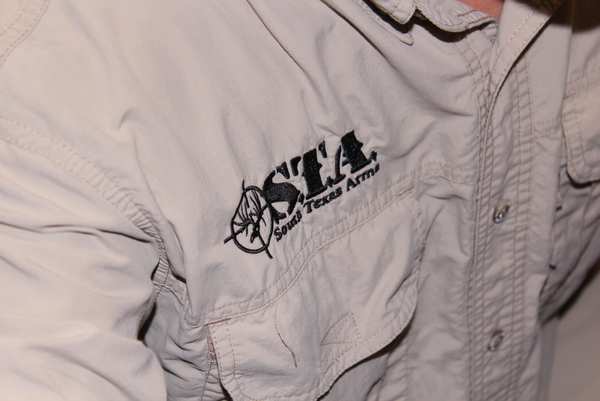
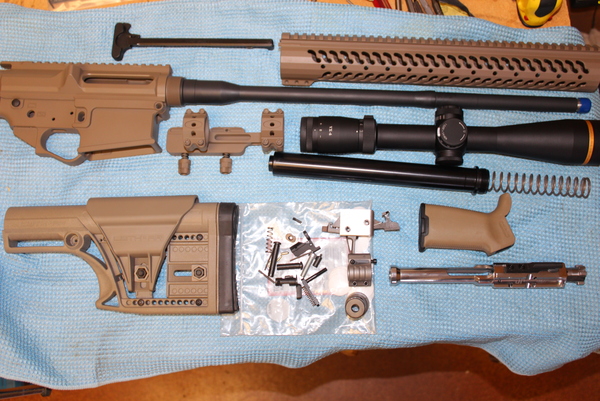
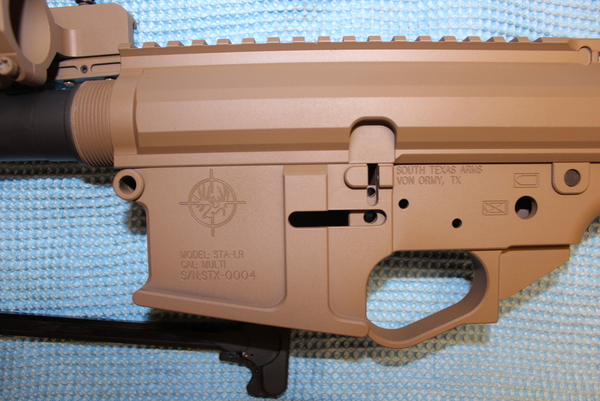
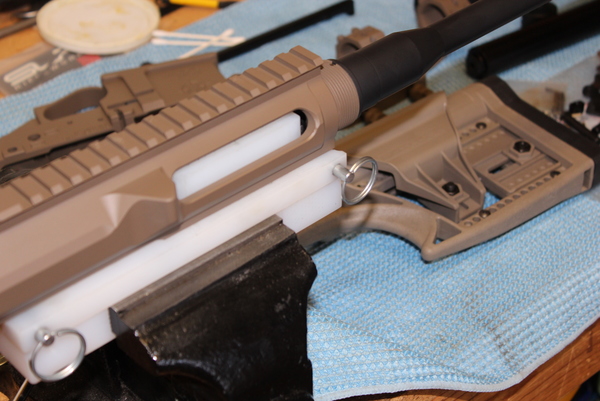
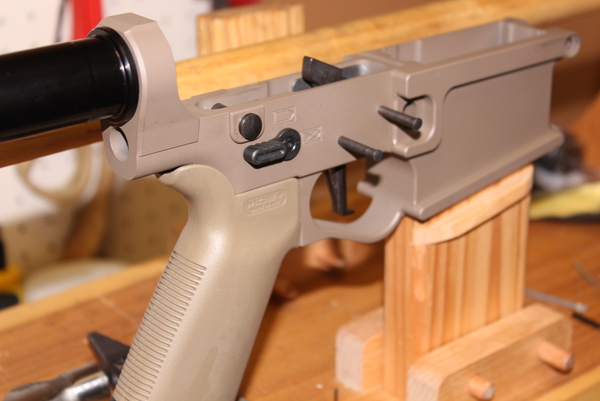
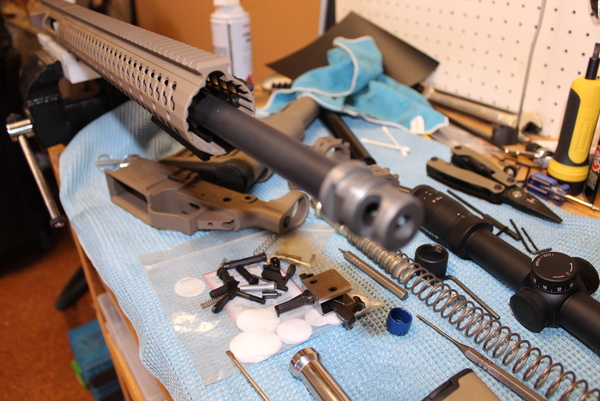
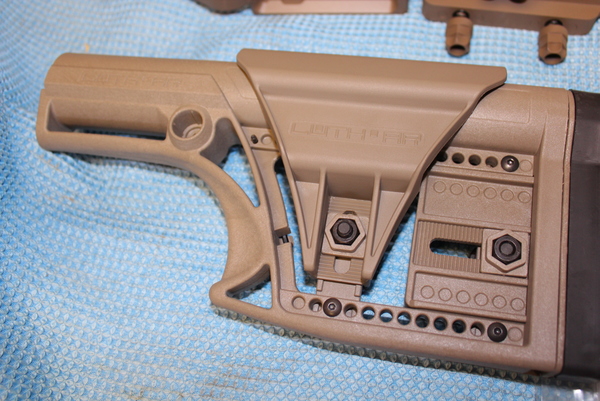
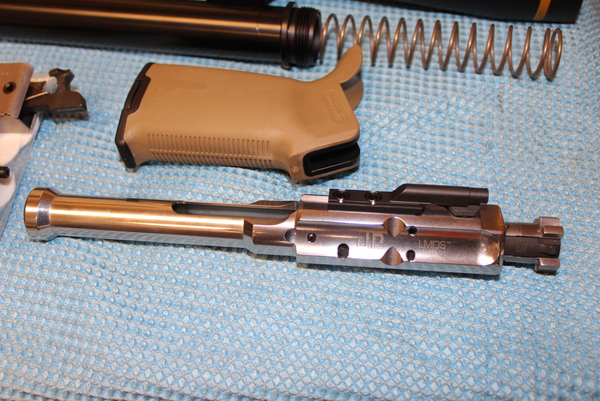
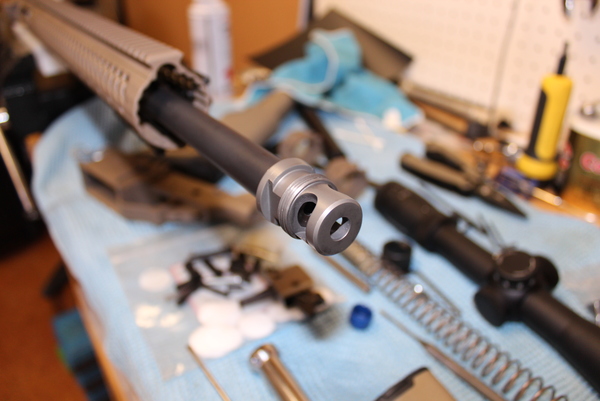
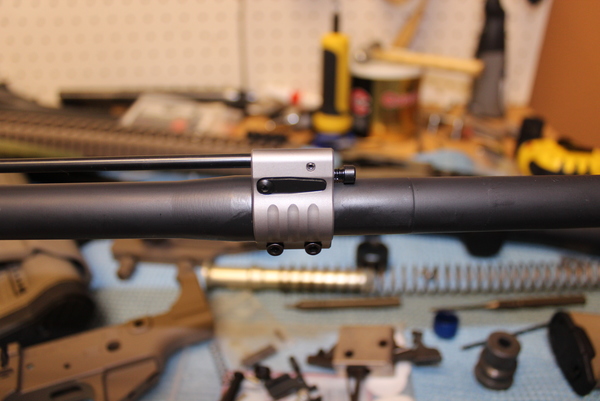
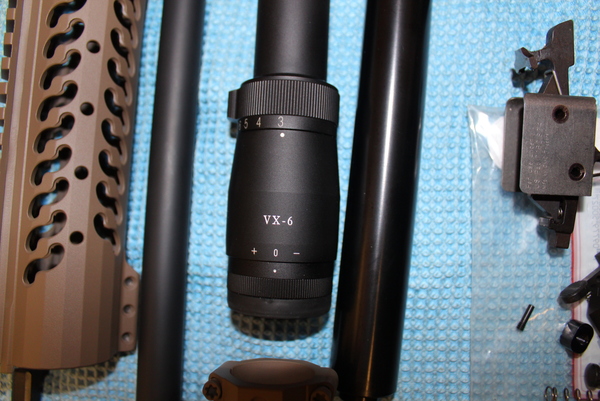
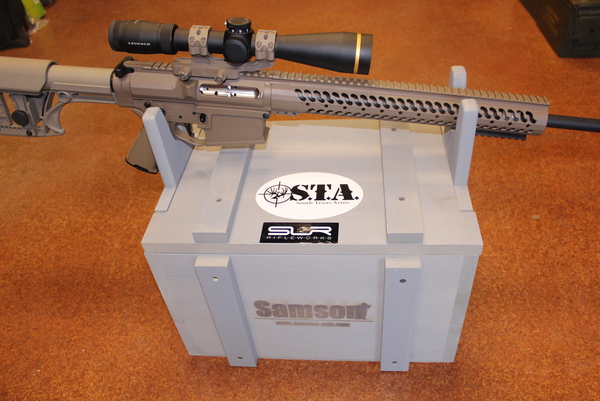
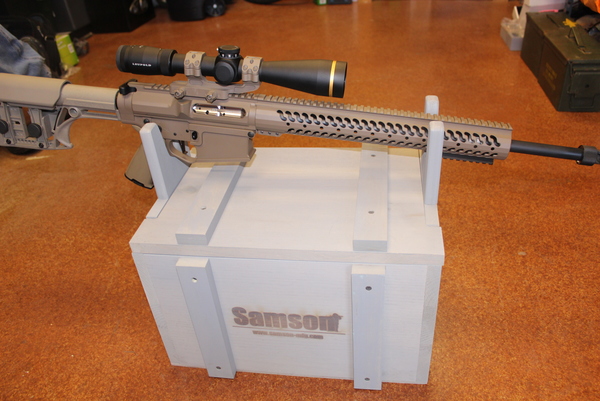
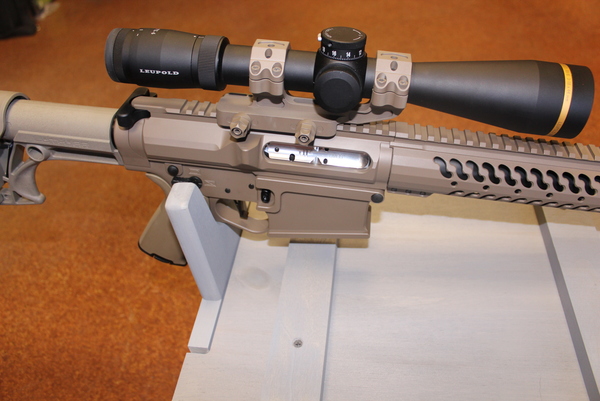
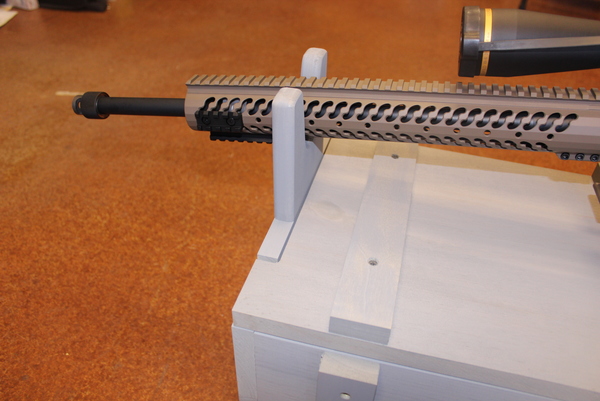
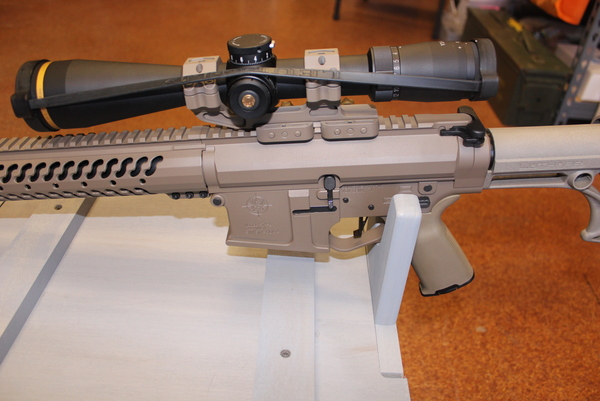
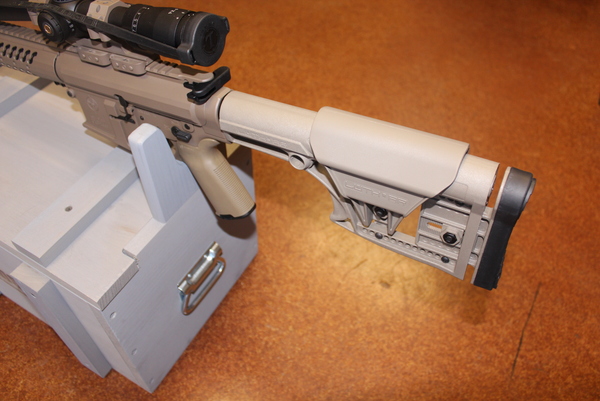
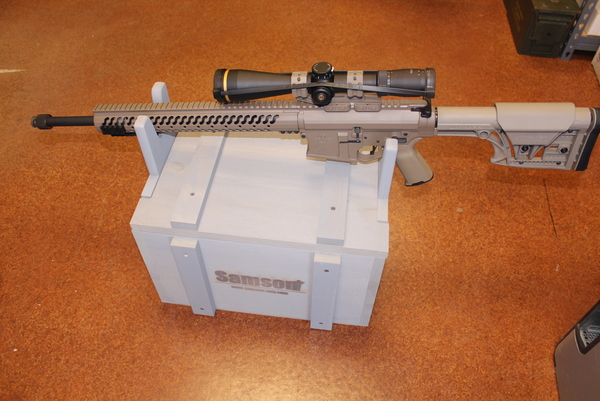
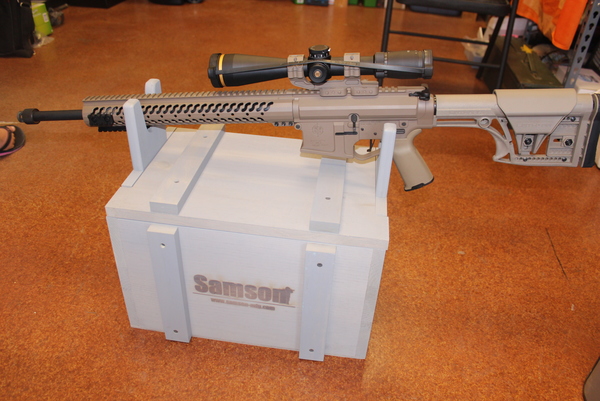
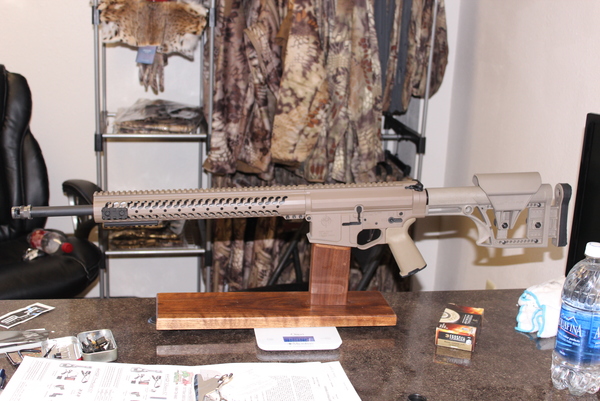
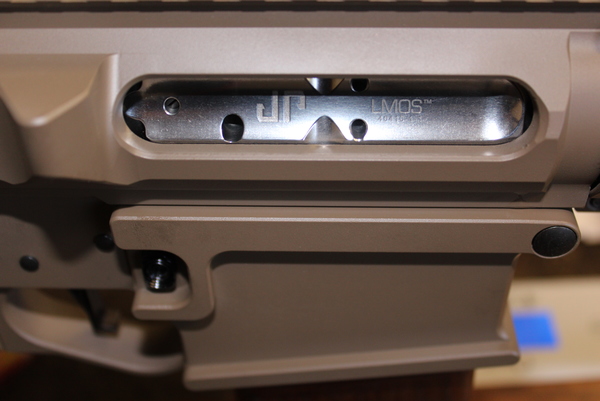
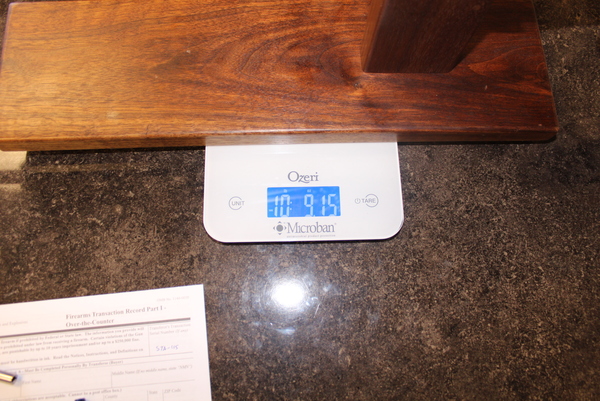
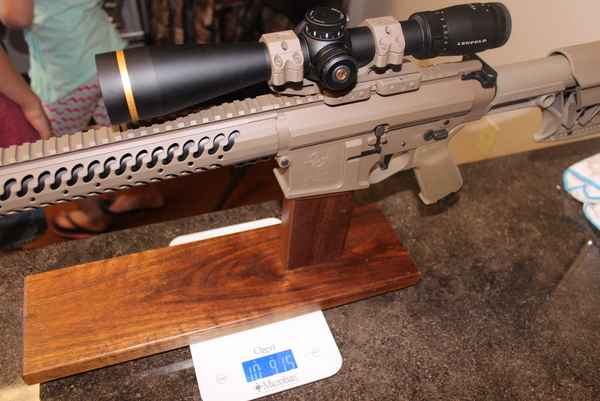
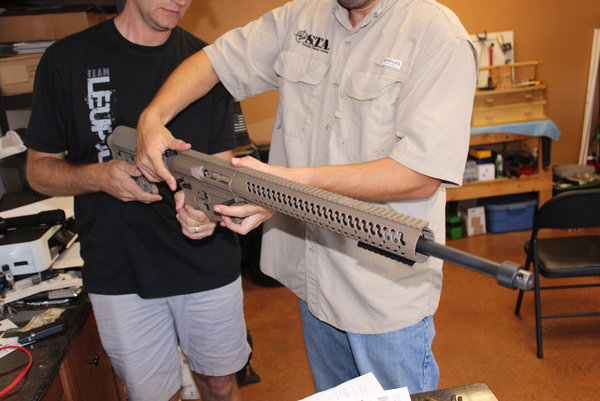
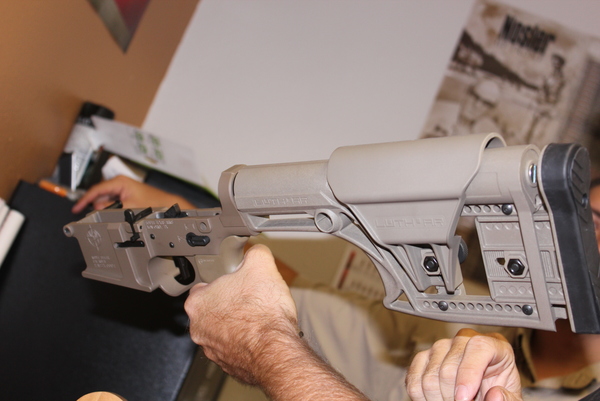
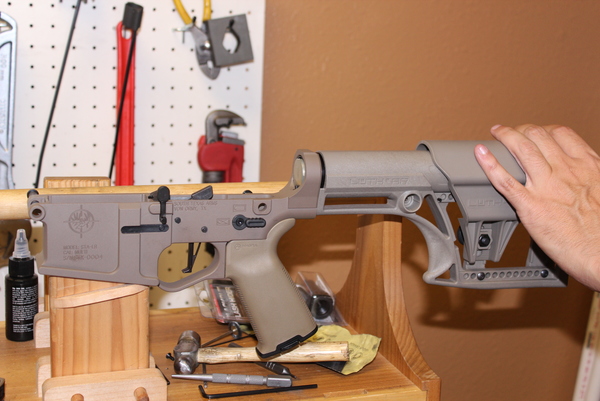
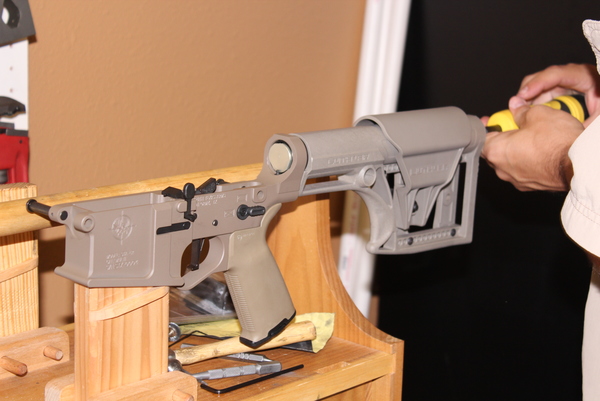
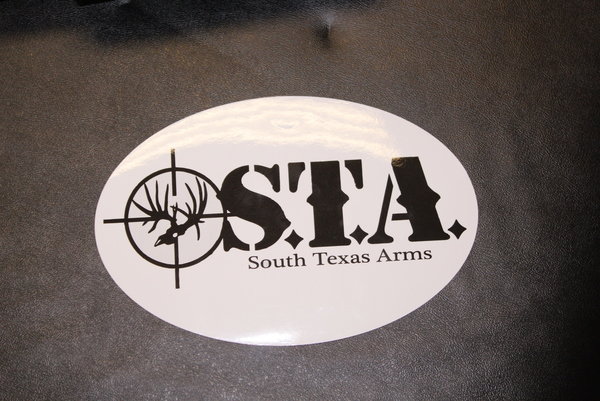
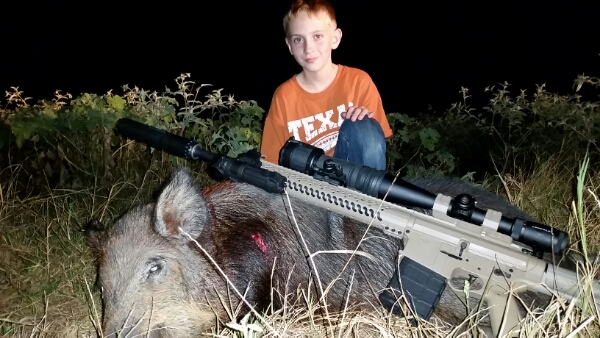
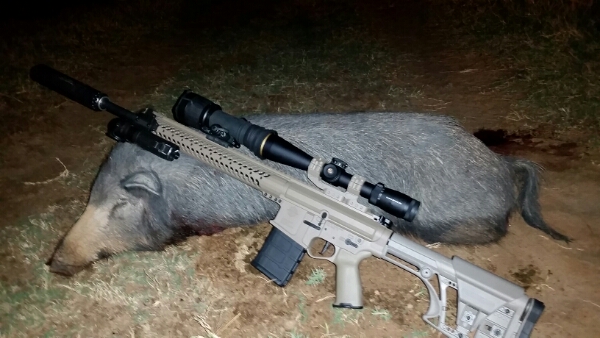
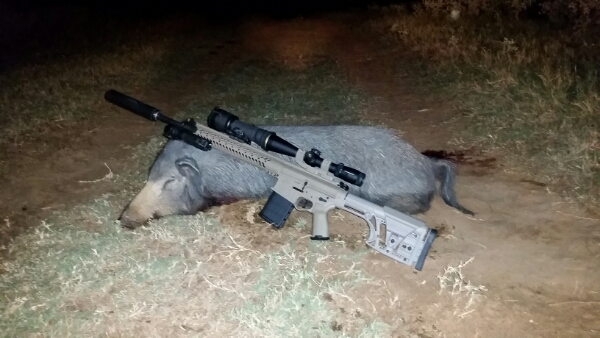
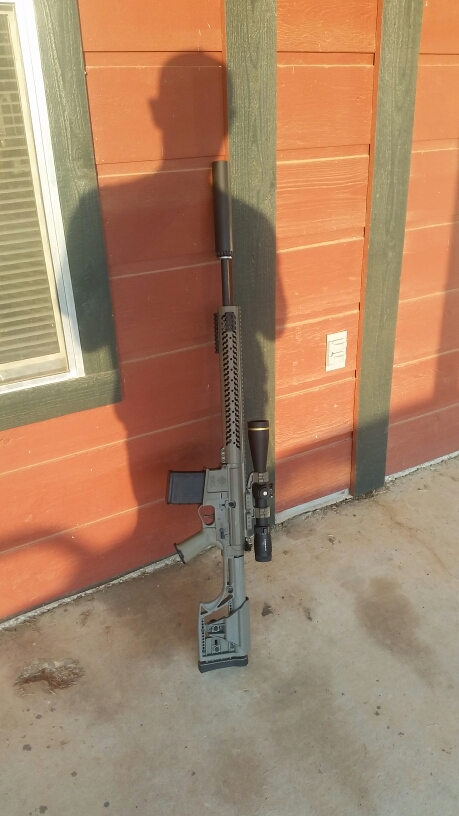
Leave a Reply